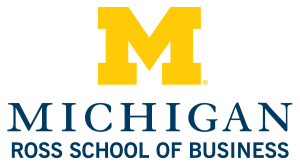This note is an adaptation for classroom use of Chapter 2 of “The Services Shift” by R.E. Kennedy (2009). It introduces students to Michael Porter’s 1985 value chain approach to strategically analyzing firms, which says that a firm is a system of interconnected activities with both physical and information linkages. It takes students through the basic steps of analyzing a firm’s value chain, explaining that to truly understand how a firm can create and capture value, it is important to explore how activities within the firm are organized and coordinated. The note concludes with some general insights to take away from the value chain framework. To apply this framework to specific companies, this note can be taught in conjunction with “Note on Exploring the Value Chain of Branded Fashion Goods”, which profiles Gap Inc. and Deckers Outdoor Corp., and gives students a context in which to use the value chain framework.
Note on the Value Chain: A Framework for Analyzing Firm Activities
by: Robert E. Kennedy
Publication Date: January 1, 2010
Length: 6 pages
Product ID#: 1-429-002
Core Disciplines: Economics, Strategy & Management
Available Documents
Click on any button below to view the available document.
Don't see the document you need?
Don't See the Document You Need?
Make sure you are registered and/or logged in to our site to view product documents. Once registered & approved, faculty, staff, & course aggregators will have access to full inspection copies and teaching notes for any of our materials.
Make sure you are registered and/or logged in to our site to view product documents. Once registered & approved, faculty, staff, & course aggregators will have access to full inspection copies and teaching notes for any of our materials.
$3.95
Need to make copies?
If you need to make copies, you MUST purchase the corresponding number of permissions, and you must own a single copy of the product.
Electronic Downloads are available immediately after purchase. "Quantity" reflects the number of copies you intend to use. Unauthorized distribution of these files is prohibited pursuant to term of use of this website.
Teaching Note
This product has a teaching note available. Available only to Registered Educators. Please login to view it.
Description
Teaching Objectives
After reading and discussing the material, students should:
- Describe why a firm can be described as a series of interconnected activities.
- Analyze the competitive advantage that results from superior performance in specific activities.
- Compare and contrast the two generic sources of competitive advantage: low cost and differentiation.

